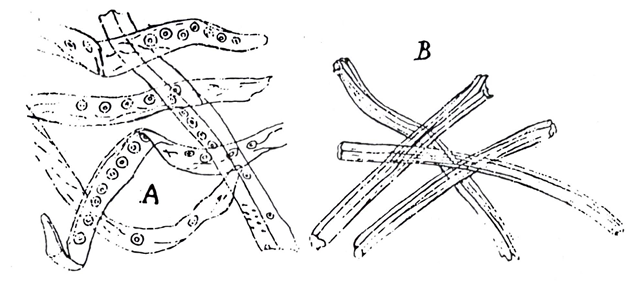Synonyms:
Regenerated Cellulose, Artificial Silk
Biological source:
Rayons are prepared from the polysaccharide cellulose molecules derived from wood pulps by maceration and treatment with various chemical substances. Depending on the means used to bring the cellulose into solution to prepare the rayon fibres, Rayons are variously named such as acetate rayon, viscose rayon, cuprammonium rayon, nitrate rayon, etc. out of these viscose rayon is mainly used for surgical dressing purposes.
Macroscopical and microscopical characters:
Viscose rayon occurs in fibres, which are white and highly lustrous. Its tensile strength is much less than that of Cotton. The fibres are solid and transparent, and have a diameter ranging from 15 to 25 um their surface is finely grooved by longitudinal lines. In transverse sections they show an irregularly crenate margin.
Viscose rayon gives cellulose test with N /50 iodine solution and 80 percent sulphuric acid (blue colour). It is soluble in CUOXAM and 60 percent cold sulphuric acid, but insoluble in 5 percent boiling potassium hydroxide solution.

Fig. 71: Regenerated fibres. A, Cellulose wadding; B, Viscose rayon. (Reconstructed from Wallis).
Constituents:
Like Cellulose wadding, Viscose rayon is also composed almost entirely of cellulose. It also contains about 0.03 percent of sulphur and yields about 0.2 to 0.3 percent of ash.
Uses:
Lint, gauze. nets and other surgical dressings are made from Viscose rayon.

